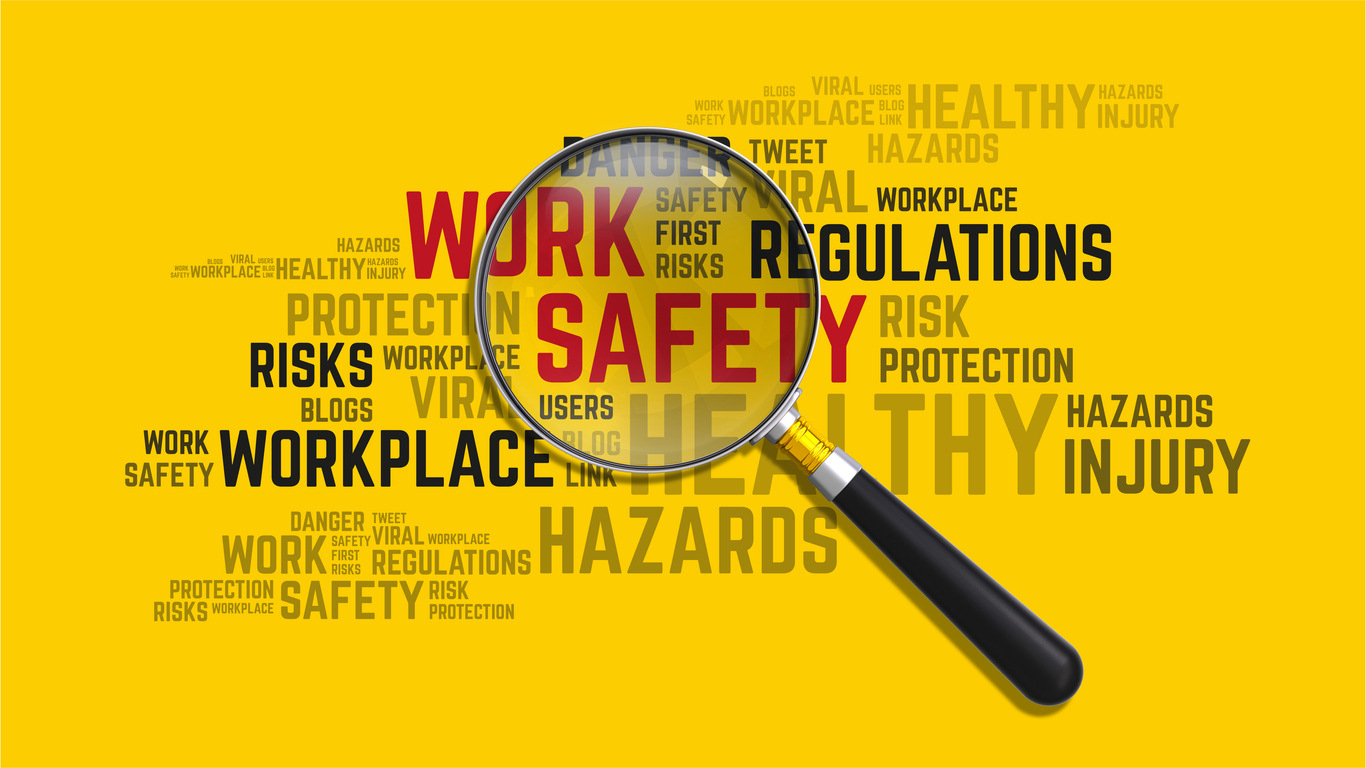
As government contractors navigate the complex web of regulatory requirements, understanding and adhering to Occupational Safety and Health Administration (OSHA) regulations is not just about compliance — it’s a strategic advantage.
Compliance ensures the safety and health of employees and significantly affects the necessary insurance for government contractors. Let’s explore OSHA's legal obligations and how Sahouri’s insurance for government contractor services can safeguard your business.
What You Will Learn
- OSHA Compliance Requirements for Government Contractors
- Importance of Fall Protection
- Training and Education
- Equipment and Personal Protective Gear
- Recordkeeping and Documentation
- Responding to OSHA Inspections and Citations
- The Road to Compliance
OSHA Compliance Requirements for Government Contractors
Starting with newly awarded government contractors, OSHA requires compliance with all occupational safety and health standards for federal agencies. Its regulations are mandatory for government contractors as they intend to protect workers like private employers, including multi-employer worksite responsibility.
These regulations are critical for maintaining safety in high-risk environments like construction and contracting. Adhering to OSHA's safety standards can directly influence the premiums and risks associated with insurance policies. By meeting these standards, contractors can reduce their insurance costs, as their compliance demonstrates a lower risk profile.
Importance of Fall Protection
One of the most critical safety measures in construction is fall protection. Construction-related fall protection violations topped the list of the 10 most frequently cited standards by OSHA in fiscal year 2022 (October 1, 2021, through September 30, 2022).
OSHA standards seek to prevent fall-related injuries and deaths. But construction and contracting fall protection involves more than adhering to workplace safety because OSHA's fall protection standards offer strategic benefits beyond compliance:
- Fine avoidance: Compliance with OSHA standards helps contractors avoid costly fines and penalties for violations. Consider the example of one Illinois contractor fined $264K for safety violations endangering workers.
- Enhanced safety: These standards significantly reduce fall-related accidents, making the workplace safer, reducing disruptions, and advancing projects.
- Legal protection: Fall protection standards reduce legal risks and liabilities in fall-related incidents. This legal shield is essential in an industry where one accident can lead to years of litigation.
- Improved morale and productivity: Safe workers are more productive and efficient, improving project quality and timeliness.
- Favorable insurance premiums: Safety-conscious contractors may pay less for insurance. Insurance companies base premiums on operational risk; a good safety record lowers costs.
- Reputation and trust: Investing in safety helps contractors boost their reputation and attract clients and partners. Their safety reputation distinguishes them in competitive markets.
- Cost savings: Reducing accidents and injuries saves on workers' compensation and downtime and can offset safety equipment and training costs.
These strategic advantages underscore the importance of meeting and exceeding OSHA fall protection standards for government contractors. By prioritizing these practices, contractors comply with legal requirements and enhance their operational efficiency and corporate reputation, setting a foundation for successful and sustainable business practices.
Training and Education
Another pillar of OSHA compliance is providing employees with the training and skills to handle workplace hazards. Government contractors must provide comprehensive safety training, which is required under OSHA guidelines. Well-trained employees are less likely to engage in unsafe practices, reducing the risk of accidents and subsequent insurance claims. Regular training updates also help maintain a workforce that can respond adeptly to potential safety issues.
Equipment and Personal Protective Gear
Appropriate equipment and personal protective gear are essential to meeting OSHA standards. Regular maintenance and checks ensure equipment is up to par with safety regulations, preventing workplace injuries. Such diligence not only aids compliance but also reduces the likelihood of costly insurance claims stemming from equipment-related accidents.
Recordkeeping and Documentation
Maintaining meticulous records is a regulatory requirement and a critical component of risk management. Accurate documentation of safety inspections, incidents, and training activities helps demonstrate compliance during OSHA inspections and supports insurance claims.
Effective recordkeeping practices are vital for contractors to validate their adherence to safety standards and manage their insurance policies effectively.
Responding to OSHA Inspections and Citations
Preparation for OSHA inspections and understanding the process for contesting citations are crucial for maintaining compliance and protecting insurance coverage. Contractors should have a plan to cooperate with OSHA investigators and proactively address any identified compliance issues.
This readiness protects not only the contractor’s regulatory status but also guards against potential increases in insurance premiums or denials of coverage due to compliance failures.
The Road to Compliance
In conclusion, OSHA compliance transcends mere regulatory adherence; it is a cornerstone of operational excellence and risk management for government contractors. Embracing these standards safeguards your workforce and strategically positions your business by managing risks more effectively and leveraging insurance for stability and growth.
Sahouri recognizes the unique challenges and opportunities that compliance presents. We are at your service and ready to provide expert advice and tailored insurance solutions that meet your needs. Whether you want to reduce risks, lower premiums, or improve workplace safety, our specialists are here to help you at every step.
Don’t navigate the complexities of OSHA compliance and insurance alone. Contact Sahouri today to ensure your operations are compliant and optimized for success and sustainability in a competitive marketplace. Let us help you transform regulatory compliance into a decisive advantage for your business.



